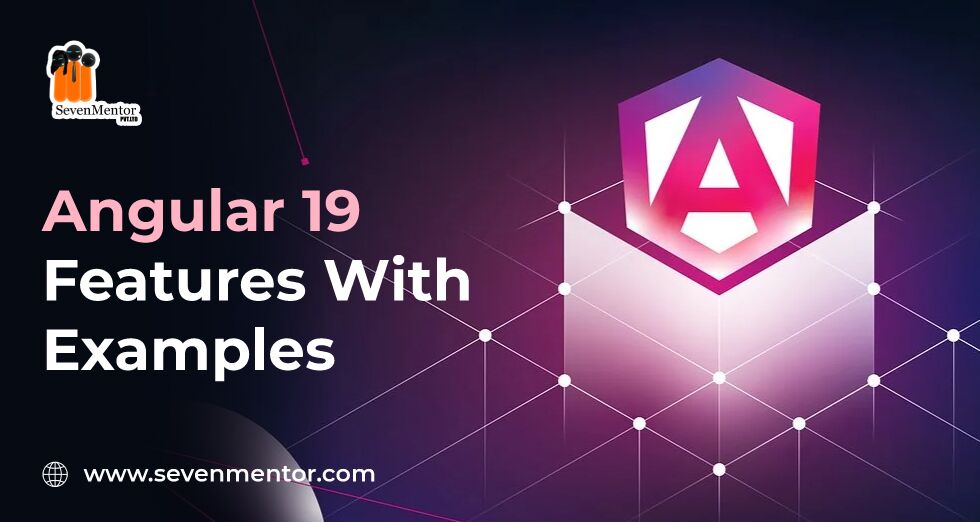Angular 19 Features With Examples
As of March 22, 2025, the latest stable version of Angular is version 19, released on November 19, 2024. This release introduced standalone directives, components, and pipes as the default, simplifying module management and enhancing development efficiency.
Key Features of Angular 19
Standalone Components by default
In Angular 19, components can be standalone, meaning they don’t need to be declared in any module.
Before (Angular 14+ with standalone: true)
@Component({
selector: ‘app-hello’,
standalone: true,
template: `<h1>Hello!</h1>`
})
export class HelloComponent {}
Now in Angular 19
In Angular 19, we don’t need to explicitly mention standalone: true — it is the default behavior for newly generated components.
ng generate component Hello
Generated component is already standalone:
@Component({
selector: ‘app-hello’,
template: `<h1>Hello!</h1>`
})
export class HelloComponent {}
Reactivity with linkedSignal()
Angular 19 expands reactivity support. You can now create reactive data that updates automatically.
Example:
import { signal, linkedSignal } from ‘@angular/core’;
const count = signal(1);
// Automatically tracks and updates when `count` changes
const double = linkedSignal(() => count() * 2);
console.log(double()); // 2
count.set(3);
console.log(double()); // 6
Improved Template Expressions
You can now use template literals directly in Angular templates for easier string interpolation.
Before:
<p>{{ ‘Hello ‘ + name + ‘!’ }}</p>
Now:
<p>{{ `Hello ${name}!` }}</p>
New Angular Material Time Picker
Angular Material 19 introduces a modern time picker component.
Example:
<mat-timepicker [(ngModel)]=”selectedTime”></mat-timepicker>
This allows users to pick a time value in a nice UI, improving UX.
AutoCSP (Content Security Policy)
Angular 19 can automatically generate CSP-compliant hashes so that your app can use inline scripts safely (currently in preview).
You just need to enable this in your Angular app configuration:
{“csp”: { “enabled” : true} }
This helps prevent XSS attacks without manual hash calculation.
AutoCSP helps protect your Angular app from XSS attacks (cross-site scripting) — which are attacks where hackers try to run harmful scripts on your website.
Usually, to prevent this, developers need to manually create security hashes (a kind of code fingerprint) for any inline JavaScript.
Angular 19 does this automatically! So we don’t have to worry about creating those hashes yourself.
Incremental Hydration
This feature helps load parts of the page on demand — useful in server-side rendering.
Hydration: It’s a process when JavaScript wakes up the static HTML page by making buttons clickable, by adding the event listener.
When hydration happens angular attaches the event listener, initializes the components, and makes the page behave like an Angular app again.
Before Angular 19 Full hydration only
Problem with this:
When the page was rendered on the server and sent to the browser,
Angular would rehydrate the entire app at once in the browser.
Even if a section was not visible or used — it still got hydrated.
This full hydration slows down the performance of the angular app as it will hydrate all components whether they are visible or not and increase the load time.
So overall degrades the performance, memory uses,and extra CPU time for unused components also.
Before Angular 19
Let’s say your app has:
A visible HomeComponent
A hidden ChatComponent in the background
Even if ChatComponent is not shown, Angular would hydrate it anyway!
@NgModule({
declarations: [HomeComponent, ChatComponent], // Both hydrated
…
})
After Angular 19 Incremental hydration
Angular 19 introduced fine control overhydration:
Now, you can decide:
Hydrate HomeComponent on server
Hydrate ChatComponent only on client
Or skip hydration for rarely used parts
Example:
{
path: ”,
component: HomeComponent,
data: { hydration: ‘server’ } // hydrated on server
},
{
path: ‘chat’,
component: ChatComponent,
data: { hydration: ‘client’ } // hydrated only on client
},
{
path: ‘about’,
component: AboutComponent,
data: { hydration: ‘skip’ } // no hydration needed}
Note: Do watch our latest video: Click Here
Author:-
Shital Chauhan
Call the Trainer and Book your free demo class for Angular now!!!
© Copyright 2020 | SevenMentor Pvt Ltd.
